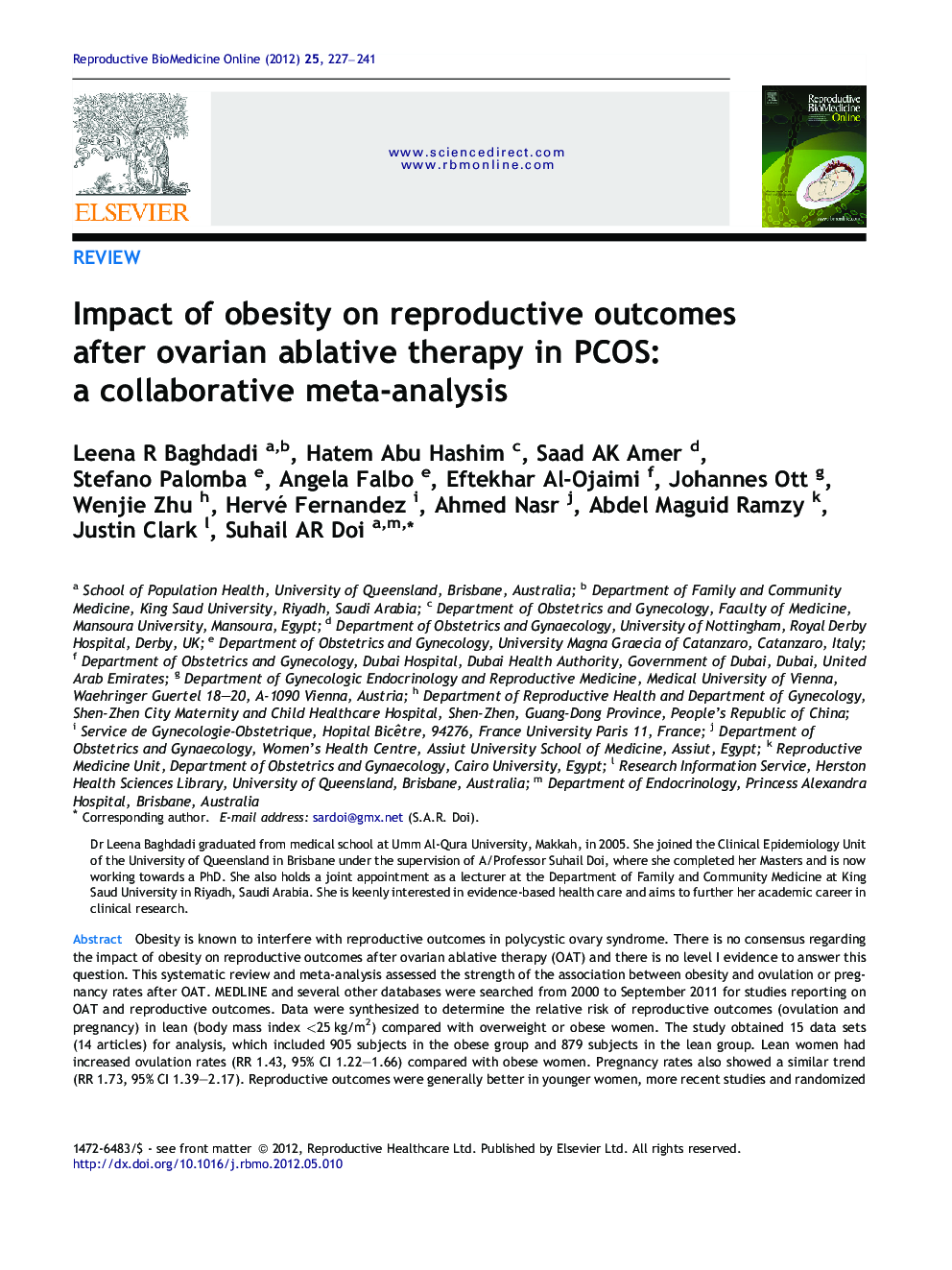| Article ID | Journal | Published Year | Pages | File Type |
|---|---|---|---|---|
| 3970635 | Reproductive BioMedicine Online | 2012 | 15 Pages |
Obesity is known to interfere with reproductive outcomes in polycystic ovary syndrome. There is no consensus regarding the impact of obesity on reproductive outcomes after ovarian ablative therapy (OAT) and there is no level I evidence to answer this question. This systematic review and meta-analysis assessed the strength of the association between obesity and ovulation or pregnancy rates after OAT. MEDLINE and several other databases were searched from 2000 to September 2011 for studies reporting on OAT and reproductive outcomes. Data were synthesized to determine the relative risk of reproductive outcomes (ovulation and pregnancy) in lean (body mass index <25 kg/m2) compared with overweight or obese women. The study obtained 15 data sets (14 articles) for analysis, which included 905 subjects in the obese group and 879 subjects in the lean group. Lean women had increased ovulation rates (RR 1.43, 95% CI 1.22–1.66) compared with obese women. Pregnancy rates also showed a similar trend (RR 1.73, 95% CI 1.39–2.17). Reproductive outcomes were generally better in younger women, more recent studies and randomized controlled trials. It is concluded that lean women respond better to OAT than their obese counterparts. These epidemiological observations indicate that obesity alters reproductive outcomes after OAT negatively.Obesity is known to interfere with reproductive outcomes in polycystic ovary syndrome. There is no consensus regarding the impact of obesity on ovarian ablative therapy (OAT) and there is no level I evidence to answer this question. We therefore undertook a systematic review and meta-analysis to assess the strength of the association between obesity and ovulation or pregnancy rates after OAT. We searched MEDLINE and several other databases from 2000 to September 2011 for studies reporting on OAT and reproductive outcomes. Data were synthesized to determine the risk ratio of reproductive outcomes (ovulation and pregnancy) in lean (BMI <25 kg/m2) as opposed to overweight or obese women. We obtained 15 datasets (14 articles) for analysis, which included 905 subjects in the obese group and 879 subjects in the lean group. Lean women had increased ovulation rates (RR 1.43, 95% CI 1.22–1.66) as compared to obese women. Pregnancy rates also showed a similar trend (RR 1.73, 95% CI 1.39–2.17). Reproductive outcomes were generally better in younger women, more recent studies and randomized controlled trials. We conclude that lean women respond better to OAT than their obese counterparts. These epidemiological observations indicate that obesity alters reproductive outcomes after OAT negatively.
